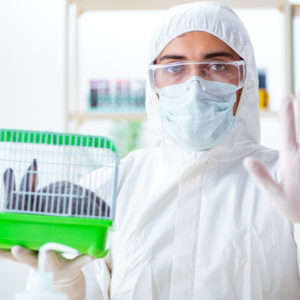Editor’s Note: For an alternative viewpoint, please see: Counterpoint: Animals Studies Are Both Necessary and Humane
Headlines about research findings imply that cures for many of our most deadly diseases are near at hand. But don’t drink the Kool-Aid. It is seldom reported that these so-called “breakthroughs” are limited to animals used in experimental settings — and will fail to translate to humans 95 percent of the time.
Using animals to attempt to understand human disease has long been the dominant practice. But experiments on animals won’t save desperately ill children or adults, and there is overwhelming evidence that they actually hinder scientific progress and put patients at risk. An immediate paradigm shift is needed.
Systematic reviews in multiple areas, including neurodegenerative disease, neuropsychiatric disorders, cardiovascular disease and stroke, cancer, diabetes and obesity, inflammation and immune responses, HIV/AIDS, addiction, trauma, and medical training, have documented the failure of animal experiments to lead to meaningful results for patients. The United States wastes almost half its research funding on archaic animal experiments. Meanwhile, more than 90 percent of highly promising basic science discoveries don’t lead to treatments for humans, and up to 89 percent of research is irreproducible — a fundamental step in science — wasting $28 billion every year.
Many animal experiments aren’t about medical breakthroughs at all. In experiments conducted at Duke University, monkeys were caged alone and kept thirsty in order to coerce them into cooperating in experiments in which they used computer touchscreens to select logos of popular commercial brands, like Pizza Hut and Nike, which had been associated with pictures of other monkeys. The reason? To attempt to show that the animals would develop a preference for brands associated with sex or social status. Taxpayers footed the bill for this nonsense.
Some experiments are so sick that they should never have been conducted at all. Eric Nestler and his team measured the time that it took for rats to have sex, cut into the males’ brains, pumped in a chemical to block their ability to process sexual pleasure and then observed whether sexual experience influenced their desire for amphetamines. He also induces depression in young mice by pitting them against aggressive older mice and watching as the young ones are physically attacked. And he torments mice for days by repeatedly shocking their feet, hanging them by their tails, and squeezing them into small tubes. Nestler has received $130 million in federal funding for these and other experiments.
Mice and rats make up 95 percent of the hundreds of millions of animals used in experimentation annually but are excluded from the federal Animal Welfare Act (AWA) and denied the most basic protections. They are confined, genetically altered and housed in stressful isolation, and they may be burned, cut open, shocked, poisoned, starved, dehydrated, forcibly restrained, addicted to drugs, and given brain damage. But like other mammals, rats and mice experience feelings of pleasure, fear, pain and suffering.
Even for animals who are covered by the AWA, no experiment is illegal, and there is no limit to what can be done to them, no matter how painful or senseless. Institutional rubber-stamp committees approve heinous experiments based on the flimsiest justifications and often fail to enforce minimum standards.
Often, animal experimenters’ own work demonstrates that animals experience a wide range of emotions, as we do, but they fail to act ethically in the face of this information. There are significant challenges to accepting the notion of animal sentience within the scientific community. Young experimenters are indoctrinated into a professional culture that suffocates empathy and ignores animal suffering — to the detriment of both animals and humans.
A 2018 Pew Research poll found that a majority of Americans oppose the use of animals in experimentation. Those who do support it believe that the harm experienced by animals is outweighed by the benefits to humans. But the facts don’t support this belief. Analyses of experiments on animals revealed that 93 percent of the studies examined should never have been approved, because of the high levels of harm to the animals and outcomes that generated little to no benefit to humans.
Advances in human-relevant research technology hold tremendous promise for revolutionizing biomedical discovery and ushering in an age of personalized medicine. Funding agencies must redirect public funds to relevant research that has real potential to help humans. An economy of human-relevant research methods has developed, and it is rapidly outperforming animal experiments. With greater investment in exciting and innovative non-animal methods and bold policy initiatives, far more promising cures and treatments for humans can be developed. This will also alleviate the unimaginable suffering of millions of animals.

